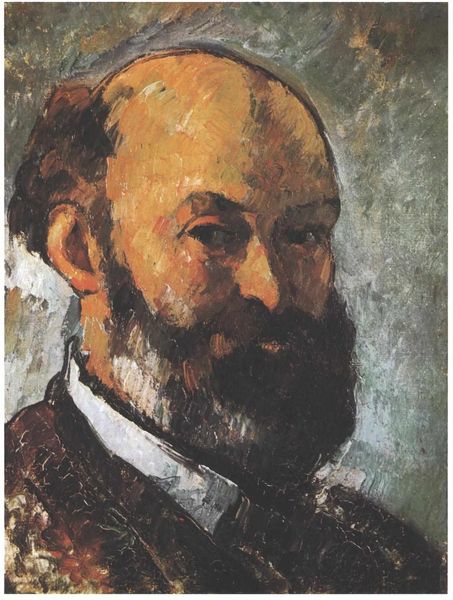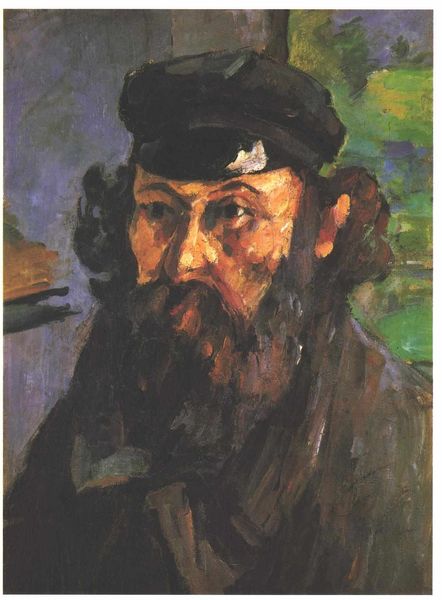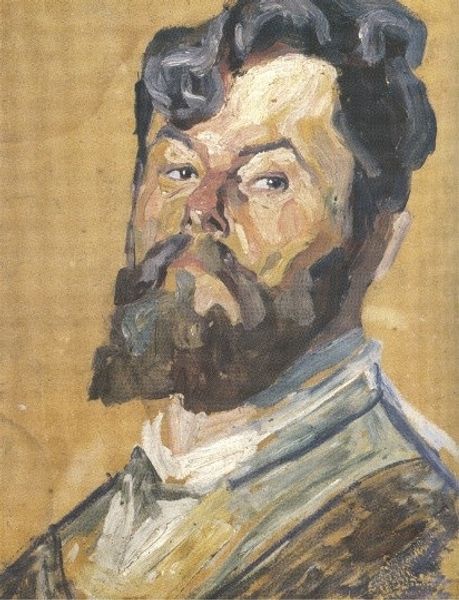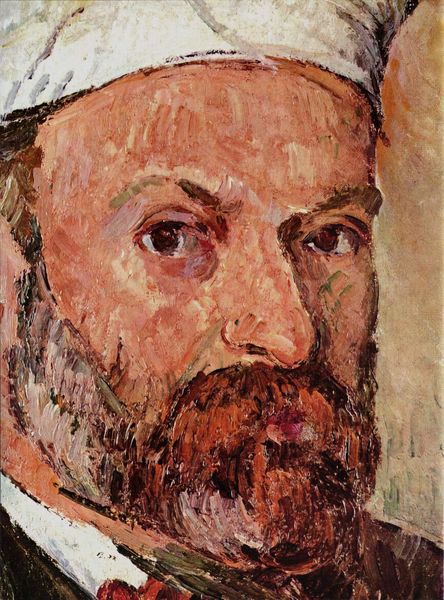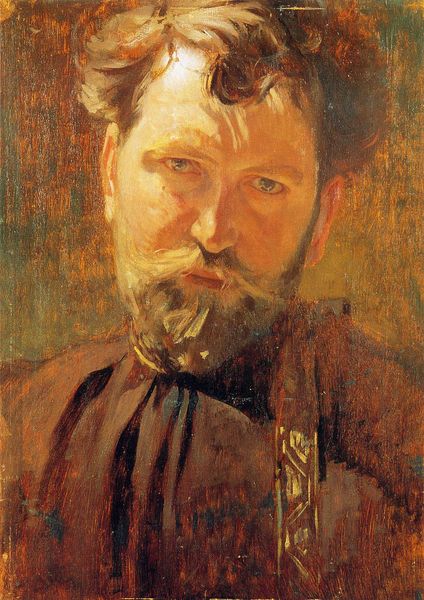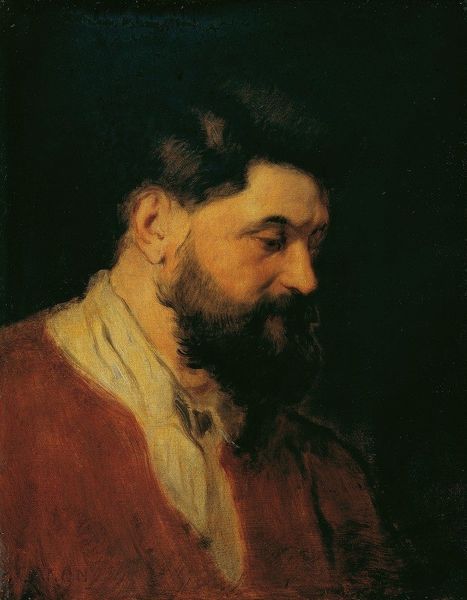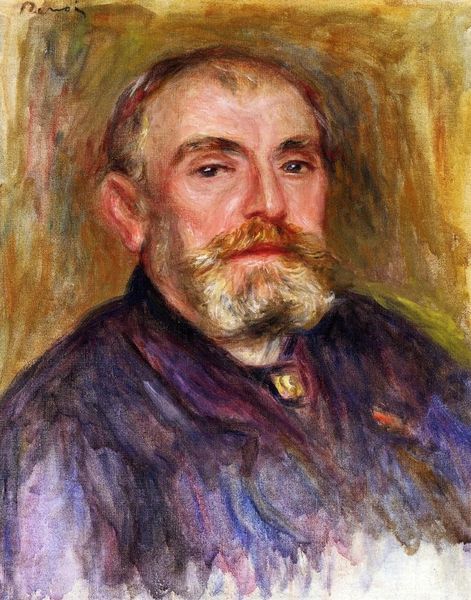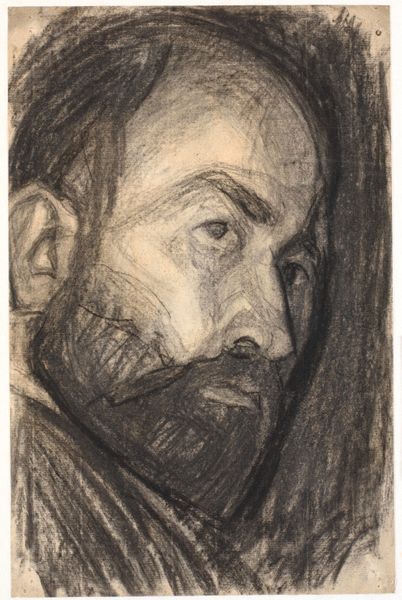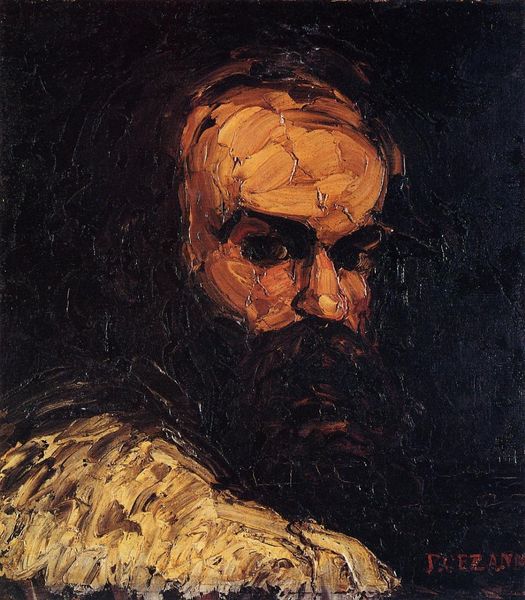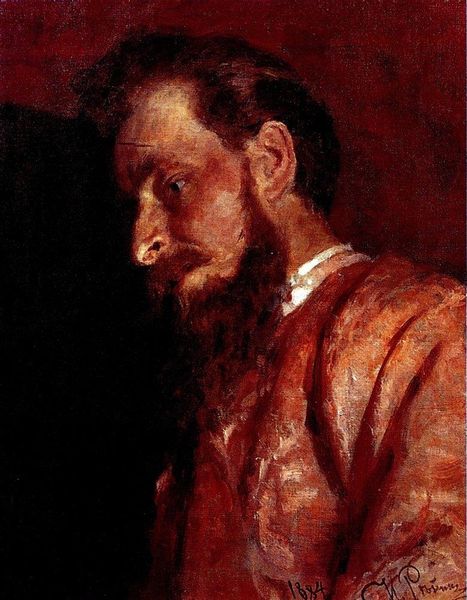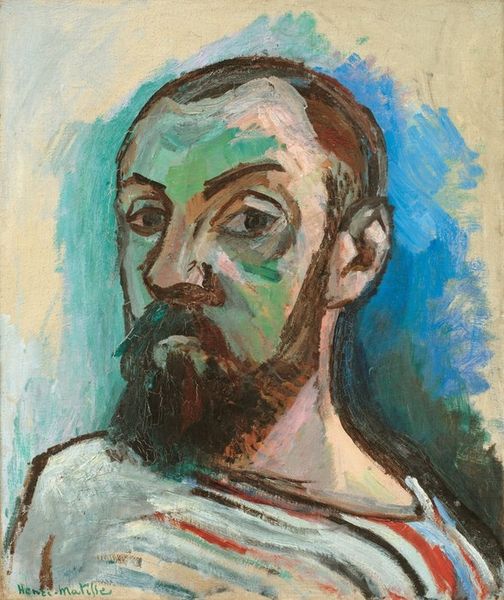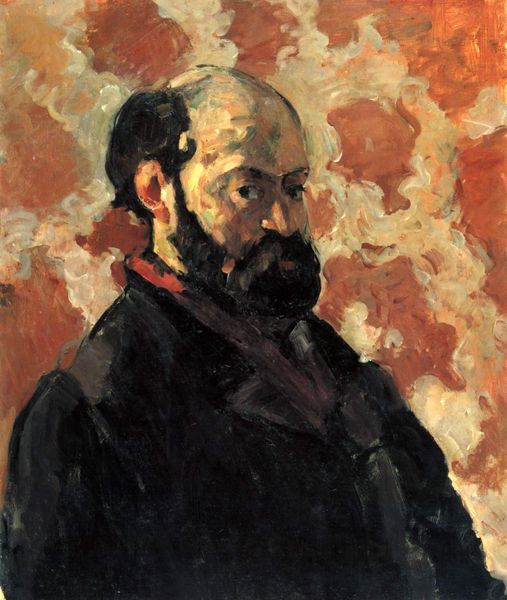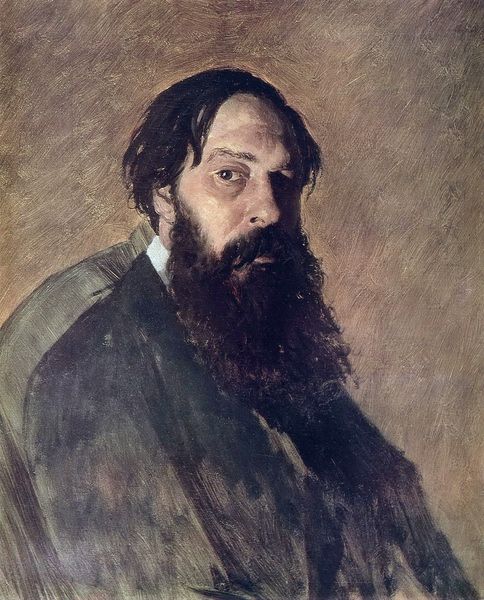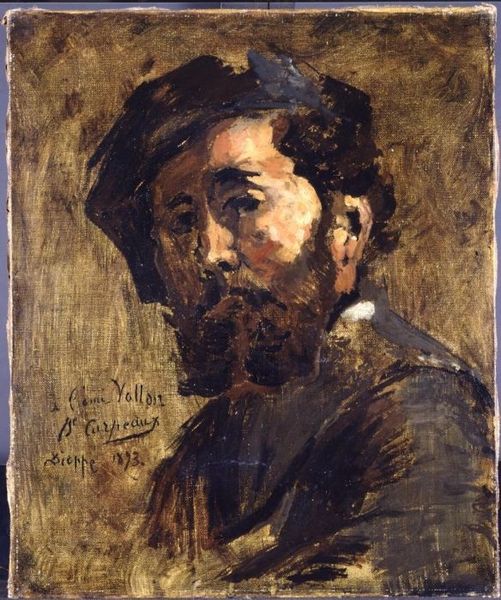
oil-paint
#
portrait
#
self-portrait
#
impressionism
#
oil-paint
#
oil painting
#
portrait reference
#
post-impressionism
#
academic-art
#
portrait art
#
modernism
Copyright: Public domain
Editor: We are looking at Paul Cézanne’s Self-portrait, painted in 1882. It’s an oil painting and it resides in the Musée d’Orsay. What strikes me is its honesty. The colors feel so natural and unadorned. How do you interpret this work? Curator: Honesty is a wonderful observation! Cézanne strips away idealization, doesn't he? Think about portraiture as a symbol – traditionally about power, wealth, status. What does Cézanne replace it with? What symbols *are* present, beyond mere representation? Editor: I suppose it's replaced with a raw depiction of the self? The beard, the somewhat dishevelled appearance... Perhaps those suggest the life of an artist? Curator: Precisely! The beard, yes – think of artistic or philosophical traditions linked to beards. And consider his gaze: steady, almost confrontational. This is a man, yes, but also a symbol of modern artistic vision. Can you see how his color choices enhance this effect? Editor: I see that the colors are earthy and very real... How the shades contrast near the eyes seem to really make his gaze strong, his personality stands out? Curator: Excellent! The gaze becomes a symbol itself: one of unwavering dedication. Each brushstroke contributes to an icon of artistic selfhood, don't you think? Editor: Definitely, looking at it that way, it really speaks to his dedication and maybe even a little bit of rebellion against established portraiture styles! Curator: Yes! And the legacy… later artists saw in Cézanne a profound dedication to the honest and rigorous exploration of vision itself. We, today, remember him for his revolutionary commitment to the self and art.
Comments
No comments
Be the first to comment and join the conversation on the ultimate creative platform.
